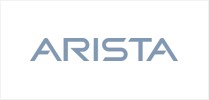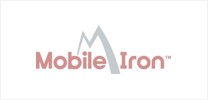This year has been a tough one for many restaurant operators. In its 2023 State of the Industry report, the National Restaurant Association found that exactly half of all operators expect to be less profitable than the previous year. While consumers still love restaurants, economic headwinds force many to cut back on discretionary spending, and restaurants are experiencing higher prices for line items that include food, labor, utilities, and occupancy. Operators are doing what they can, but rising costs and fewer customers are like a vise with mounting pressure on all sides.
While nearly all restaurants are raising prices, changing menu items, and cutting back on other areas to move closer to profitability, these actions raise the question of how decisions are made. No one alive today has previously faced the unique challenges of a pandemic coupled with inflation, so doubtlessly, many operators are making gut decisions based on their own experiences. However, there is a group of savvy restaurant operators who are making data-driven decisions that guide their actions to:
- Improve revenue and margins
- Increase guest satisfaction
- Decrease costs
- Improve efficiency
Data Transparency Relies on a Common Backbone
With multiple data sources flowing through a restaurant operation, it’s essential to ensure that maintaining visibility isn’t time-consuming. A flexible, open API in a modern financial management system allows real-time integrations with all data sources, including legacy or third-party systems. This creates a complete picture of operational performance. Synthesizing that data into a single source of truth gives restaurant operators the information they need when they need it.
A robust reporting solution gives insight and visibility into data and delivers the tools to make better decisions. Restaurant operators will find what they need to optimize margins and pricing and better meet guest requirements. Access to real-time data helps restaurants react faster and solve any problems more quickly. Improved visibility and reporting in real-time let restaurant operators rapidly analyze data and isolate any issues with numbers, locations, or menu items. This enables deeper dives into transactions to determine where problems occur. Furthermore, with customized dashboard features, restaurant operators have better visibility into financial performance in real time and can drill down and get answers quickly without relying on the finance team. This transparency and detail allow them to make better decisions faster than waiting weeks after the monthly close.
Pulling all this together requires a solid financial management system as a platform backbone. A single connected system helps eliminate time-consuming manual processes and takes full advantage of the connectivity and digital features of today’s smart devices and applications. Implementing automated digital operations for functions such as timesheets, inventory, and guest receipts can improve efficiency, enhance accuracy, cut costs, and prevent revenue leakage. As well, automation reduces errors and improves accuracy. Automation enables better integration with other business applications and suppliers and allows for the bidirectional sharing of information so restaurant operators can better manage their supply chain and transactions.
What the Data Can Tell You
According to industry benchmarks, prime costs (cost of goods sold and labor) make up about 60% of a restaurant’s expenses. While that may seem high, lower premium costs may indicate poor quality and service. Staying in control of your prime costs starts with consistent and routine monitoring.
The cost of goods sold (COGS) measures food and beverage expenses. Integrating an inventory management system with a financial management platform that tracks accounts payables allows a data-driven restaurant operator to compare each line item and category period-over-period, so problem areas are quickly identified. For example, if the cost of a particular item is too high compared to the budget, it might be time to renegotiate with the current vendor or seek a different supplier. Also, the issue might be that employees are inaccurately measuring ingredients and more training is required, or the issue might be that menu items are priced too low. Taking corrective actions starts with precise insights to know where to start. As a key performance indicator, COGS can be displayed as an easy-to-read dashboard with drill-down capabilities to examine each dimension for further examination. This provides real-time visibility into COGS to help make data-driven decisions.
The same discipline can be applied to the other significant components of prime costs. Labor should be calculated as a percentage of total sales spent on salaries, wages, and benefits. Staff, such as host stands, restaurant servers, kitchen staff, and management, can be assigned to unique categories. A data-driven restaurant operator can easily see what’s driving costs by creating different reporting dimensions. Drill into these dimensions to generate labor reports that show whether your restaurant is staffed at the proper levels for the correct times of the day so you can course-correct if needed.
By integrating your point-of-sales and reservation systems with a financial management platform, you can further quantify areas that include:
- Average check to measure the average amount spent by customers in the restaurant.
- Occupancy rate measures the percentage of seats in the restaurant that are occupied at any given time. It can help operators optimize seating arrangements and staff levels.
- Table turnover rate measures the number of times tables are turned over a given period. This helps determine how many customers you can serve during a specific timeframe.
You Can’t Manage What You Don’t See
Start by defining your restaurant’s goals and what is most important to your overall strategy. Balance this approach with measures that reflect the complete picture of your restaurant’s health and program impact. Measuring and reporting outcomes will require extra effort. But doing so brings immediate and long-term benefits.













